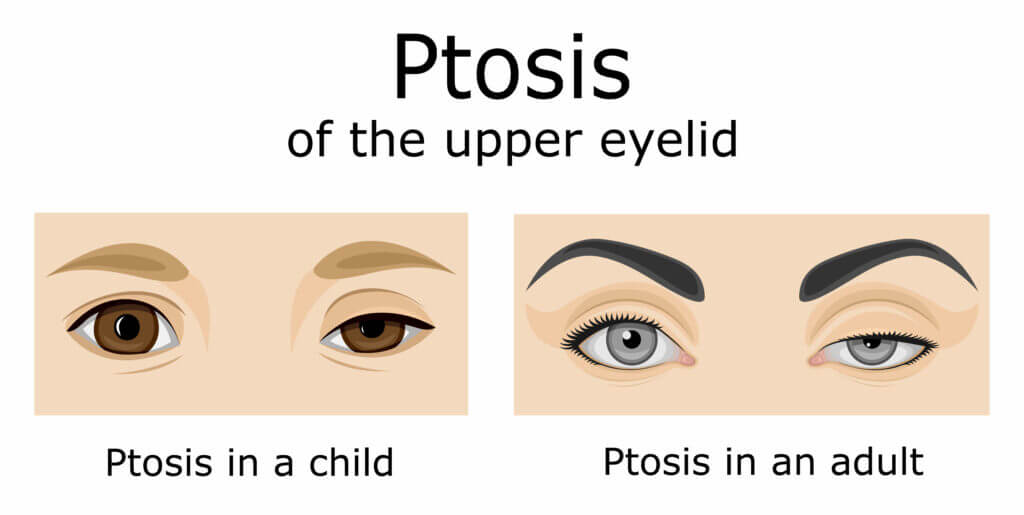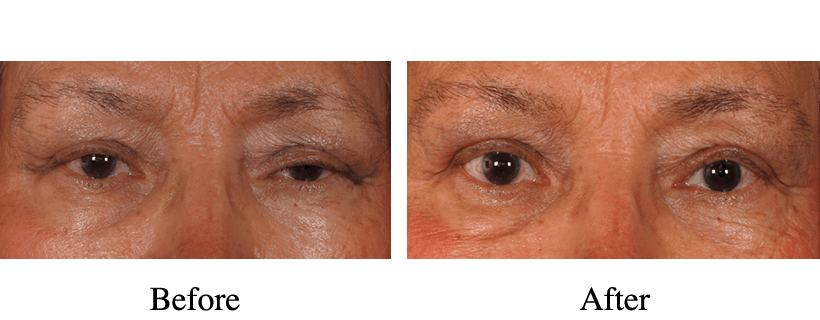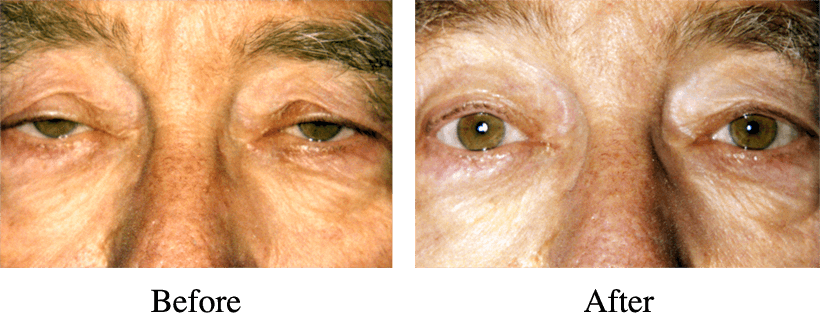
In evaluating the upper eyelids, in addition to evaluating for the presence of excess eyelid skin (dermatochalasis) and the position of the eyebrow, it is important to also assess the position of the eyelid itself. Many patients with time will develop a lowering of the upper eyelid position as a result of weakening of the associated eyelid elevation muscle and attachments. This condition is known as eyelid ptosis. Eyelid ptosis can often impair a patient’s peripheral vision or in very severe cases even their central vision. Eyelid ptosis often co-exists with dermatochalasis and brow ptosis and often all three components need to be evaluated and addressed in order to obtain the best results. It is important to understand that the primary goal of eyelid ptosis repair and any additional functional upper eyelid surgery is to improve the visual function of the eye and less so to improve the aesthetic appearance of the face.


